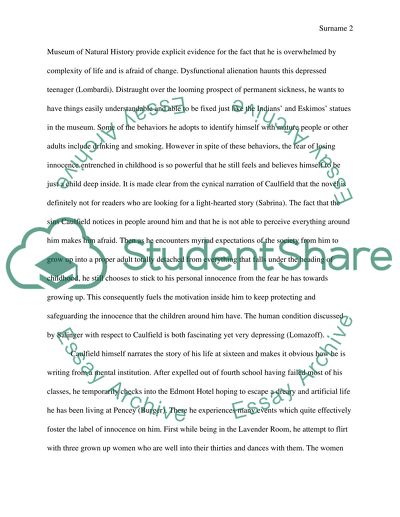Cite this document
(“Loss of innocence in Catcher in the Rye Essay Example | Topics and Well Written Essays - 1250 words”, n.d.)
Retrieved from https://studentshare.org/literature/1478910-loss-of-innocence-in-catcher-in-the-rye
Retrieved from https://studentshare.org/literature/1478910-loss-of-innocence-in-catcher-in-the-rye
(Loss of Innocence in Catcher in the Rye Essay Example | Topics and Well Written Essays - 1250 Words)
https://studentshare.org/literature/1478910-loss-of-innocence-in-catcher-in-the-rye.
https://studentshare.org/literature/1478910-loss-of-innocence-in-catcher-in-the-rye.
“Loss of Innocence in Catcher in the Rye Essay Example | Topics and Well Written Essays - 1250 Words”, n.d. https://studentshare.org/literature/1478910-loss-of-innocence-in-catcher-in-the-rye.


